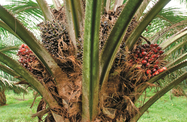Recent efforts to upgrade Malaysia’s agricultural sector that include increased incentives for farmers to learn new techniques and adopt advanced technology are expected to lead to greater harvest yields and help meet rising domestic demand for food products.
While the sector contributes around 12% of GDP and provides employment to some 16% of the national workforce, most of this is concentrated in two key segments, palm oil and rubber production. The contribution of the rest of the agricultural sector is estimated at 4%, though its share of employment is higher, as much of Malaysia’s farming is still labour-intensive. At present, the input of the non-oil and rubber farming sectors is approximately $6.5bn a year, but the government wants to see this more than double by 2020 to $16bn.
To achieve this, Malaysia is trying to adopt smarter farming techniques. Agriculture was one of 12 separate National Key Economic Areas (NKEAs) identified under the Economic Transformation Programme (ETP), launched in late 2010 as part of the government’s efforts to increase national income to more than $500bn by 2020 and achieve developed nation status. The ETP made a clear distinction between agriculture and the palm oil and rubber industries, which fall under a separate NKEA.
The ETP set out a number of initiatives to boost the sector, including a growing focus on export cash crops (tropical fruits), tapping into the global herbal products market and increasing the usage of advanced technology to improve yields.
Though the government’s master plan for agriculture foresees a doubling of revenue, it only projects a modest increase in employment, with technology replacing labour-intensive practices and a shift in rural employment structures. While it is unlikely that agriculture employment levels will lift substantially over the coming decade, the growing pool of rural labour is expected to be taken up by a rise in food-processing operations, with the value-added component of agriculture seen as one of the segments to record the highest level of expansion.
On April 5, Muhyiddin Yassin, the deputy Prime Minister, said it was important for farmers to explore value-added agriculture activities, rather than just limiting themselves to cash-crop production. Farmers should look at venturing into food processing or producing material from by-products to earn extra money, he said during the opening of a fertiliser plant.
“To move forward, farmers must find new opportunities to enable them to earn long-term income,” Muhyiddin said.
In early April, Noh Omar, the minister of agriculture and agro-based industry, stated that the government was trying to create an environment in which farmers become businessmen and view agriculture as an industry, rather than merely growing produce.
“Our role is to facilitate the process and invest in capacity building in order to grow the agri-industry to become a key contributor to the nation’s economic wealth,” he said when speaking with the New Straits Times. “This has created opportunities for farmers to practice high-value agriculture and reach markets at all levels.”
Another opportunity recently unveiled by the government aims to protect local fruit and vegetable growers. In late March, the state announced that as of 2015, farmers’ markets and National Agribusiness Terminal (Teman) outlets will no longer be allowed to sell imported fresh produce.
According to data issued in late March by the Ministry of Agriculture and Agro-based Industry, some 40% of vegetables sold at the Teman outlets – centres set up by the state to market agricultural products – are imported from neighbouring countries.
As most of these vegetables are grown in Malaysia, the move by the government may not encourage the development of new product ranges, but it should help growers by reducing competition and giving them a stable market. A possible downside of the new policy, however, especially if it was extended to restrict fresh food imports beyond the limited scope of the farmers markets and Teman outlets, is that retail prices could be pushed up, as some of Malaysia’s neighbours have lower production and labour costs.
This could be offset to a large degree by improvements in economies of scale and efficiency, with higher production and turnover, as well as technological advances, helping to push down costs. These savings could then be passed on to the consumer.
Over the past 50 years, the Malaysian economy has become far more diverse, moving away from a time when agriculture accounted for 30% of GDP and provided employment for half the workforce.
While the government wants to see agricultural output increase, it is likely that other sectors of the economy will continue to outstrip rural production. By promoting smarter farming, and seeking to supply niche markets, Malaysia will come closer to achieving food security and increasing earnings.

